Why Leaders Are Moving Media Dollars to SEO Now
- Thought Leadership
- By Seth Besmertnik
- 9 minutes read
Three weeks ago, much of our marketing became useless: ads are now running in empty elevators, billboards are filling empty streets, and all our events are canceled.

CEOs and CMOs are trying to figure out what to do. Many are slashing their media spending significantly, and some are using this moment to prepare their companies for long-term success, not just short-term survival.
Budgets are falling and targets are not being met
Businesses face big decisions: how to respond to this unprecedented situation, how to make the right budget cuts, how best to help customers in this time of crisis.
Currently, 65% of marketers anticipate budget cuts.

Source: Impact of COVID on Marketing Study
Meanwhile, the goals are still the same or higher.
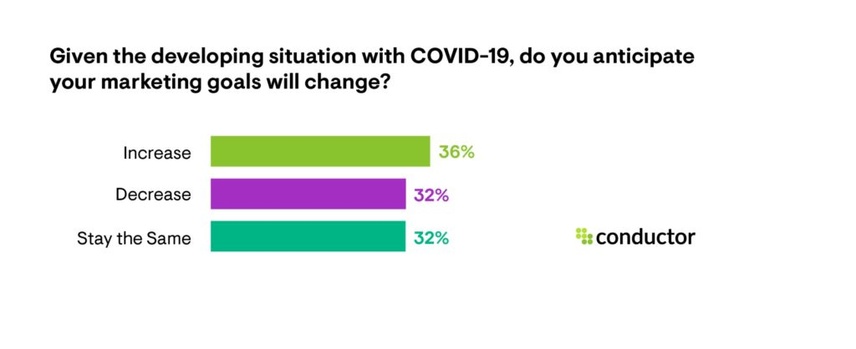
And it will undoubtedly be difficult to achieve these goals.
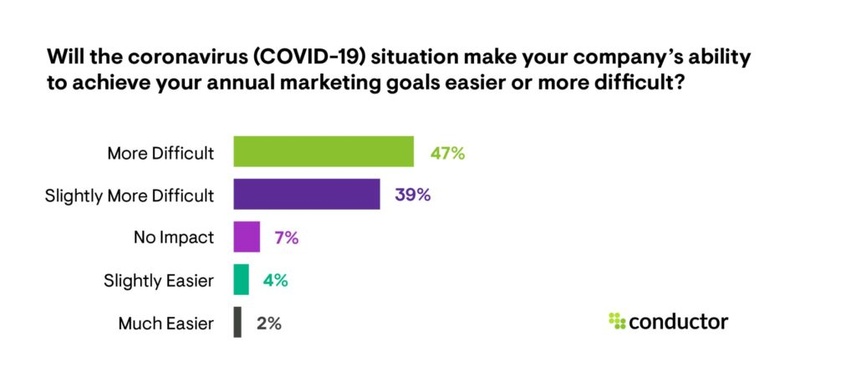
Yet, the Majority of Marketers Are Investing More in SEO
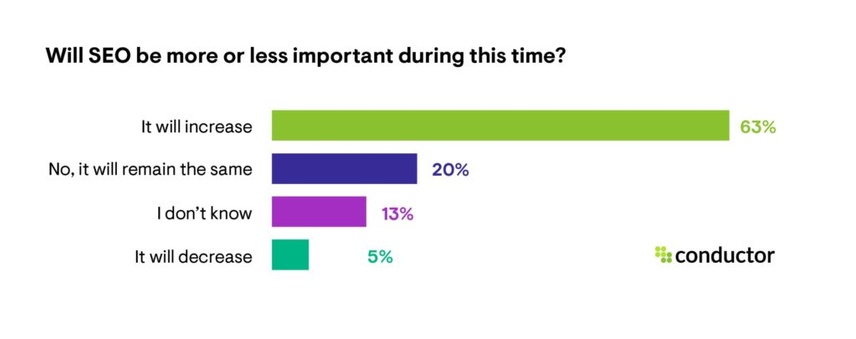
63% of marketers are immediately increasing their focus on SEO—why?
It Starts with Your Customer
Where are your customers? Certainly not in the elevator, but at home, using search engines like Google, YouTube & Alexa at record levels.
Why? People depend on the content they find in almost every decision they make in their lives. Today, this is more true than ever. Before your current and potential customers pick up the phone (if they do at all), they search.
It is estimated that more than 20 billion searches are happening every day. People need help.
So the big question is: are you being found? And what are you losing out on by not being found?
Marketing as Stock Options vs. Bonds
Most media investments are fleeting, you buy an impression, you get an impression. You buy a click, you get a click. In good times, it's possible to deploy large amounts of capital through media campaigns, but that's expensive and inefficient, so when consumer demand and budgets fall, it's difficult to rationalize those investments.
Your content and SEO are like bonds (high-yield/low-risk ones). You invest today. You start to make a return today. If you execute well, you continue to drive value for many years — without making any further investments.
Warren Buffet often refers to Albert Einstein's quote on compounding interest as "the most powerful force in the world." SEO is the compounding interest in your marketing department. It grows on itself.
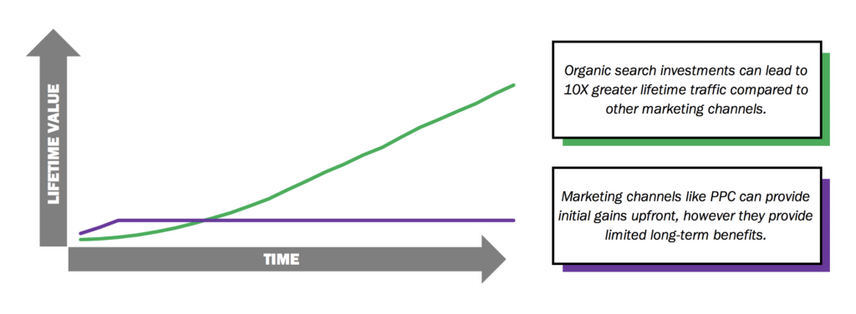
As a simple example from the real world, here are the channels driving traffic to a post on our blog over the first few months after it was published. No changes or optimizations were made to this content after it was launched.
Over time, you will see organic visitors pay off as compound interest, a single investment that produces more and more value over time.

Most content gets a spike in traffic for a few weeks, which promptly dies, but content created to meet customer demand - SEO-driven content - builds value over time.
If you continue to invest in long-term content and SEO, you get a stream of visitor dividends that becomes a material ROI, which is a big advantage over competitors who are completely dependent on paying market rates for new customers.
Consider some examples from the wild content released more than two years ago that still attracts thousands of visitors a month.
Credit Karma’s Loan Calculator
This simple tool helps you determine your monthly payments for a loan. Enter your loan amount, interest rate, and term to see your estimated monthly payment.
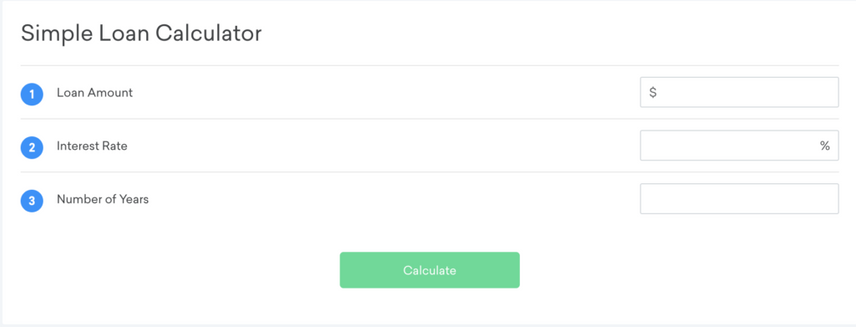
Published back in ~2013, the organic value has grown over time. In 2020, it’s now bringing ~150,000 visitors a month to Credit Karma’s site.
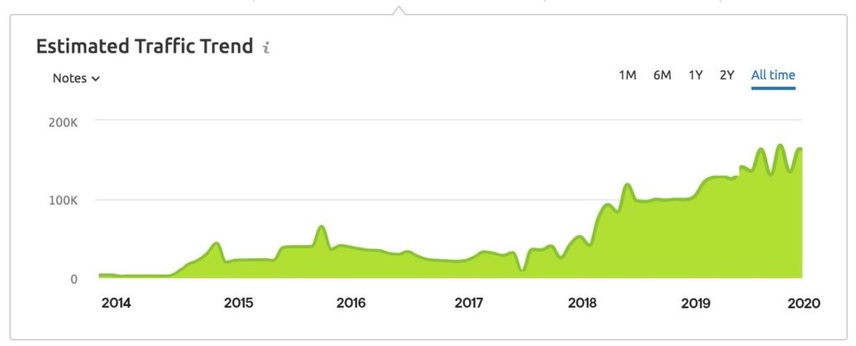
Penn Medicine: How to Soothe a Sore Throat
Penn Medicine has a network of informative blogs that attract huge numbers of visitors.
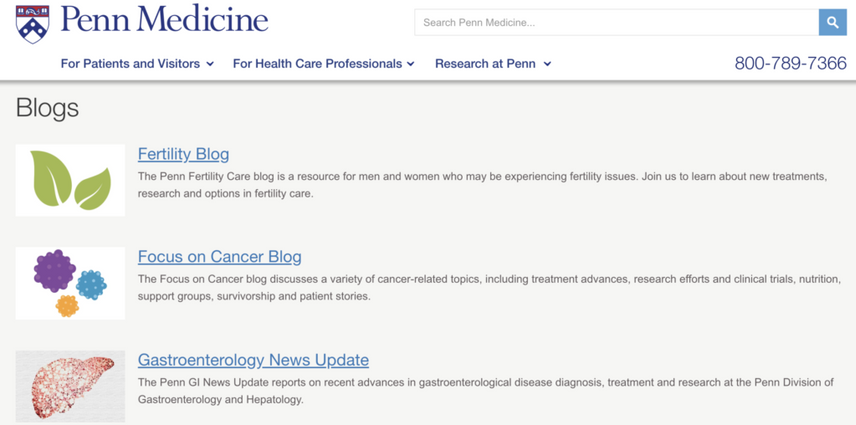
Here's the modeled traffic for just one article on how to soothe a sore throat :
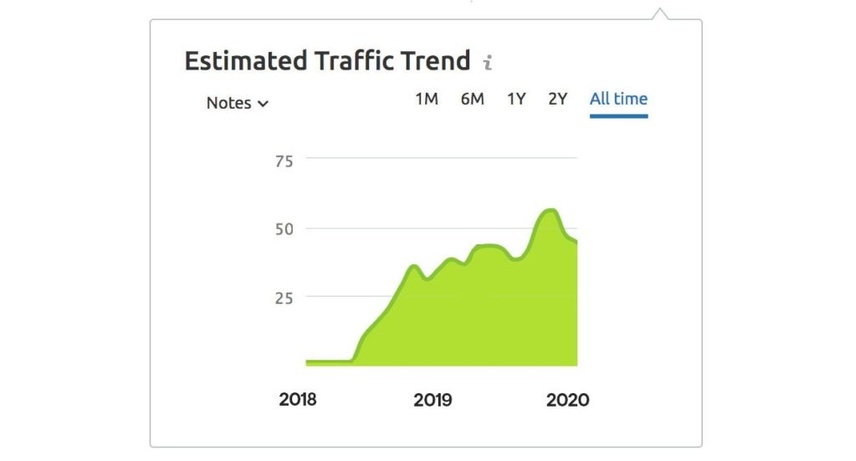
You Already Have A Lot of What You Need
It is very likely that 90% of all existing content will get almost zero organic traffic, but that need not be the case.
SEO is not just about creating new content, but also about optimizing existing content. You can maximize the efficiency of the hundreds or thousands of defunct pages that can attract visitors again. An example:
The Hartford's Workers' Compensation Hub
This information hub includes video, text, interactive tools, and much more, and provides comprehensive answers to workers "questions about compensation".

This single page drives 50,000 visitors per month through organic. The recent jump is thanks to SEO optimizations, a great example of the power of enhancing existing content to generate the compound interest effect.
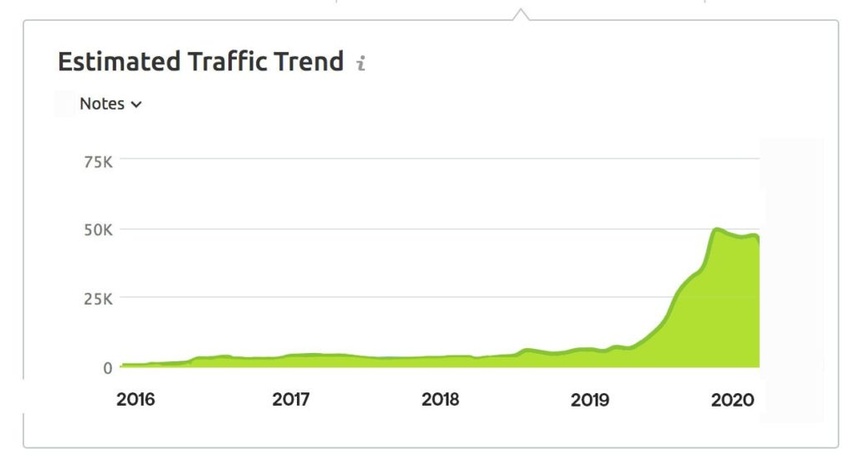
Improving content can be as simple as adding tags or making your page more relevant to searchers queries. Or it can be a general improvement such as updating your technical infrastructure or speeding up page loading. A great technical foundation is like oxygen in a digital economy.
Content Is the Foundation for All Marketing
You don't create content just to show up on Google. Content is the basis for almost everything you do in marketing. It powers campaigns across other channels such as email, print, digital advertising and events.
But while you don't create all content for SEO, SEO can help in all content creation.
SEO uncovers your customers’ sentiment and needs so you can create the right content. Use this customer-centric content to drive or tackle your most important challenges.
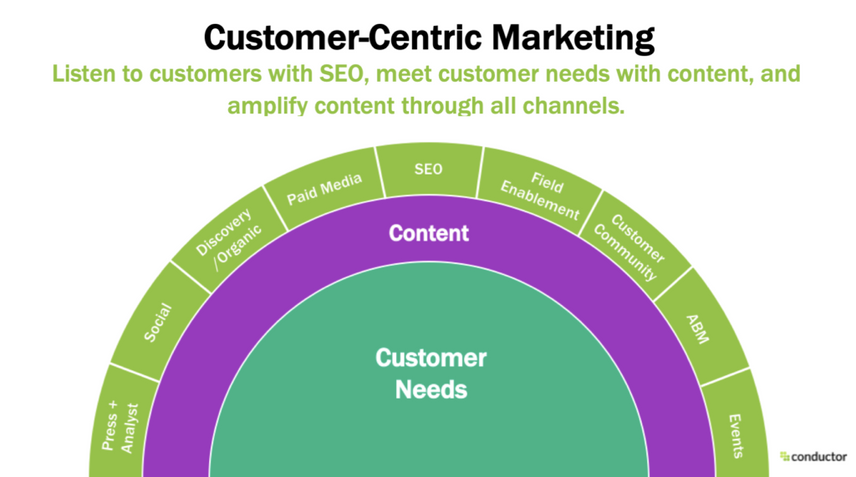
Content Is Critical for Customer Support, Too
As an added benefit, SEO can help reduce costs in other areas of your business.
A key use case at the moment is support costs. If Delta has visible, valuable answers to questions like "Delta Coronavirus Cancellations," they have saved their call centers thousands of customer service calls. At Conductor, some of our largest customers are the support departments of Fortune 100 companies. They use SEO to save millions in support costs and ensure that customers have a great experience getting answers online.
SEO Is an Investment in Your Present and Future
If you invest today, you will immediately start getting value. You will also be in the best position to capture purchasing activity when we emerge from this crisis.
Take this time to look at your portfolio. If you invest in SEO and content (your marketing bonds) the next recession or a time you have to scale back, you will be able to pull back on your media and still have a significant stream of visitors because you have created this foundation of wealth and goodwill. You will not be entirely at the mercy of the media markets.
This will be a strategic advantage; some companies even emphasize their "free organic traffic" in their S-1 when they go public because it is so significant.
What Do You Need to Be Successful?
Here are a few things that every marketing department should have. I will use anonymized slides to illustrate them.
A Clear Understanding of Your Market Size and Opportunity
Start at a high level. How many people are searching for your products and services and how often are you being found?
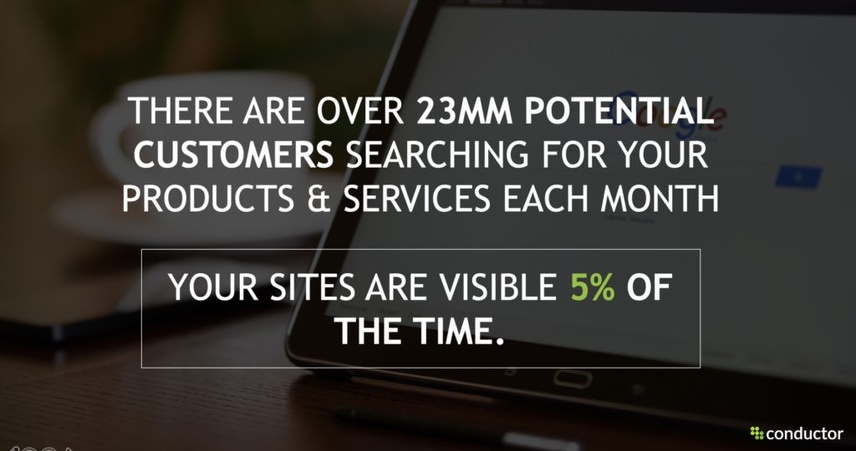
Then have a look at all the keywords you are bidding on in paid search. Do you have organic results for these keywords? This is a great opportunity to reduce paid spend by creating content organically.
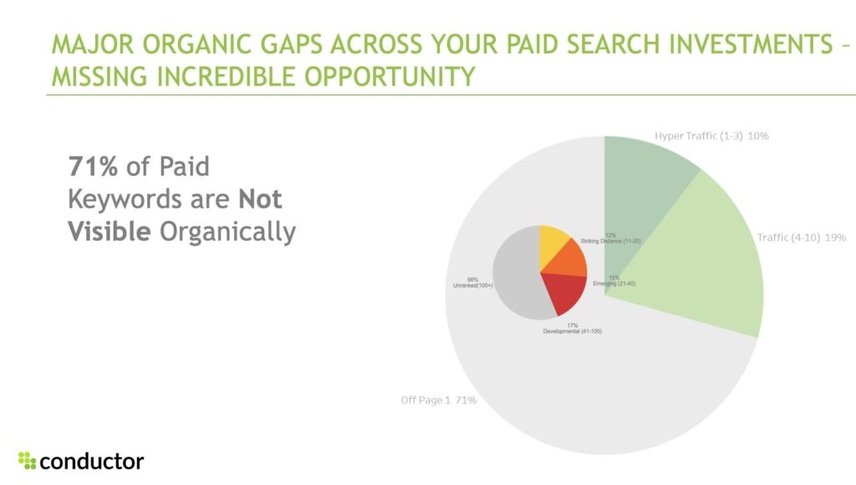
If you happen to have local businesses, you can break things down on a map: which markets are most in demand, and are you visible there?
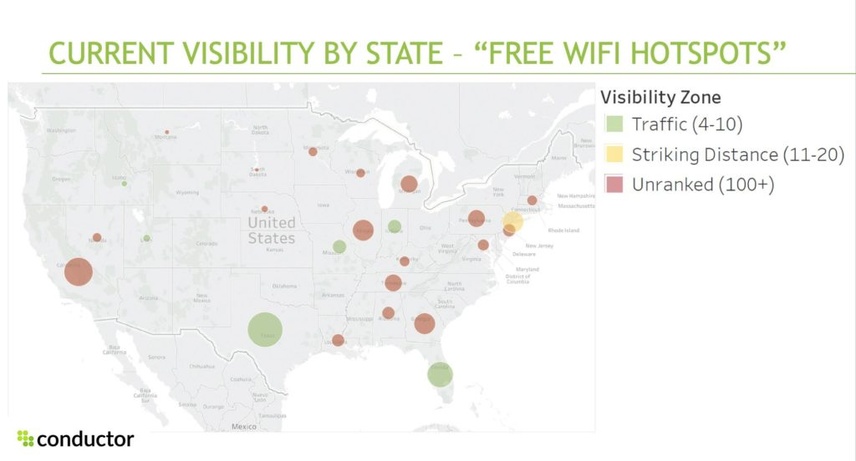
Which companies show up in each of these markets?
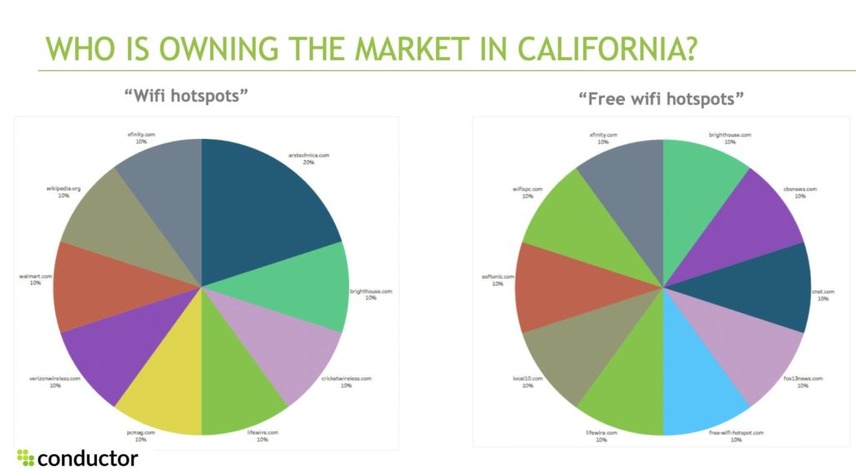
A Clear Understanding of Your Digital Competition
Your competitors in search may surprise you. They are not always the same as your business competitors. You may be losing visitors to pure-play websites or even publishers that are sending readers to your competitors.
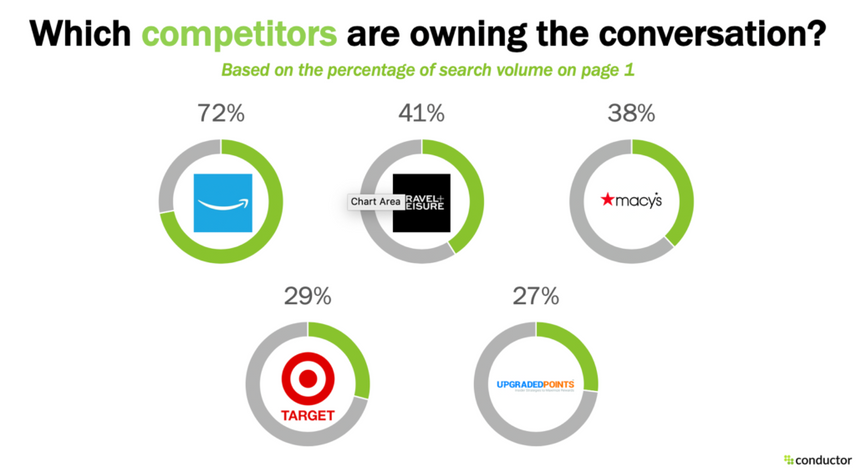
It is important to know what people are finding in order to get ahead.
A Clear Strategy, Plan & Reporting Cadence
Clearly prioritize work streams across the major categories of SEO: 1) creating new content, 2) optimizing content and 3) improving technical site structure. Your priorities should be set based on opportunity size, competition level, and the difficulty of execution.
Set goals to increase your share, improve how often you appear in search, and have a reporting infrastructure each week to track your work and its impact.
Success Is About Agility and Speed—Not Spend
In most marketing, ROI is about ‘spend over return’. With SEO, it’s about ‘activities over return’.
The most successful companies are able to execute fast. They measure how long it takes to implement an SEO recommendation. They measure how long it takes to go from a content brief to a published page. The faster you cycle, the more you can test and get done — increasing your impact.
Measure how long it takes for your team to take action. Ask them what prevents them from acting faster. We often see legacy processes — such as a legal department process from 2005 — slow teams and keep companies from becoming market leaders.
Reach in for Wisdom, Not out
Your company is full of experts. People who know your business and your space better than anyone else in the world. Nevertheless, companies go to agencies to create their content. Why?
Once you have identified the top issues your customers are searching for, find the experts within your organization and gain their knowledge. Make it easy for them to get involved in the content process. It's your specific knowledge that enables you to win in your market.
Great Marketing Helps People (and Makes Money)
Remember that ultimately, search is about helping people. Your company has great wisdom, and your content is your outlet to share it with your customers. If you give the answers, you are the one they trust. And we only want to spend money with companies we trust.
Want to read more of our findings on marketing in the age of COVID-19? Read through our full report here.
Talks about #seo, #culture, #leadership, #entrepreneurship, and #digitalmarketing








